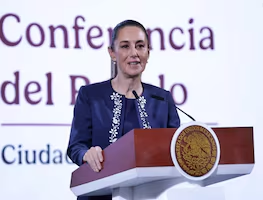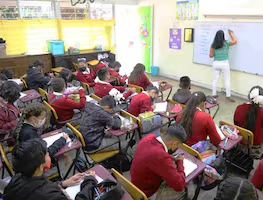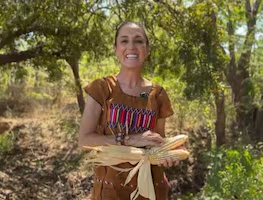Más Información

Claudia Sheinbaum, por definir asistencia presencial a reunión "urgente" de la Celac; migración, tema clave del encuentro

Noroña califica política de EU como hipócrita, racista y fascista; se solidariza con Petro ante deportaciones

Magistrada Mónica Soto propone sustituir al Comité de Evaluación del PJ; plantea someter a insaculación a aspirantes elegibles

Magistrado Reyes Rodríguez propone validar registros de aspirantes con promedio inferior a 8; excluirlos es “estigmatizante”, señala

¿Eres madre trabajadora? Puedes acceder a las guarderías del IMSS; descubre los requisitos y cómo hacerlo
Amid the COVID-19 pandemic, the Mexican government announced 269 municipalities located in 15 states will resume their activities on May 18; however, the Vulnerability Index created by the Mexican Center of Industrial Ecology ( CMEI ) shows that in 6 of the 15 states, over 60% of people are at risk of contracting COVID-19 after analyzing characteristics like sex, age, and chronic illnesses; the 6 states are Veracruz, Jalisco, Puebla, Guanajuato, Chiapas, and Nuevo León . Moreover, since the population in these 269 municipalities is so small, the selection could be the result of a sampling method and not their reality.
At least 157 of these municipalities have around 2,500 inhabitants. Daniel Ávila, a researcher and expert on genetics and data science explains that “the number of tests in those places should start from zero, one, two, and even three for each. They are not necessarily free of contagions but small populations increase the possibilities of classifying it like that in statistics. Also, we have to add the high vulnerability rate in those areas.”
According to Dr. Ávila, many of these municipalities have natural barriers , which contributes to the idea that people who inhabit these communities are immune because they are isolated .
Recommended: Mexico overtakes China's COVID-19 death toll
One of the great risks of re-opening the country and resuming activities in these locations is that they lack hospitals and in case of contagions , the inhabitants will be vulnerable to the novel coronavirus. For example, one of the states at risk in Nuevo León , which has been given the green light to resume its activities; nevertheless, if physical distancing measures are relaxed, 64% of its population is at risk of contracting COVID-19 but what does this mean? There are 5 million inhabitants who are over 10 years old and who are obese , smokers , and suffer from high blood pressure, diabetes , kidney failure , and other diseases. Additionally, over 1 million are over 60 years old and suffer from the aforementioned conditions, which increased their risk of contagion. All these people could be at risk of saturating a health system that only has 6,715 hospital beds available.
Another example is Oaxaca , where 200 municipalities will resume their activities. According to the vulnerability index created by CMEI , on average 11% of their inhabitants suffer from chronic illnesses that worsen COVID-19. If the 2 million people who are vulnerable to the novel coronavirus got sick, the healthcare system would be insufficient since Oaxaca had 2,869 hospital beds in 2019.
Recommended: COVID-19: Mexico implements a three-phase scheme to lift lockdown
gm





